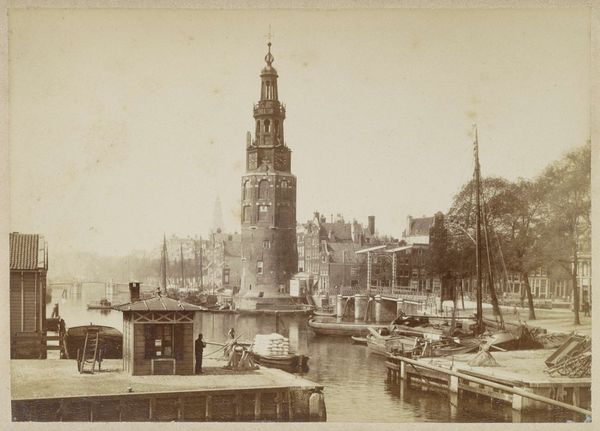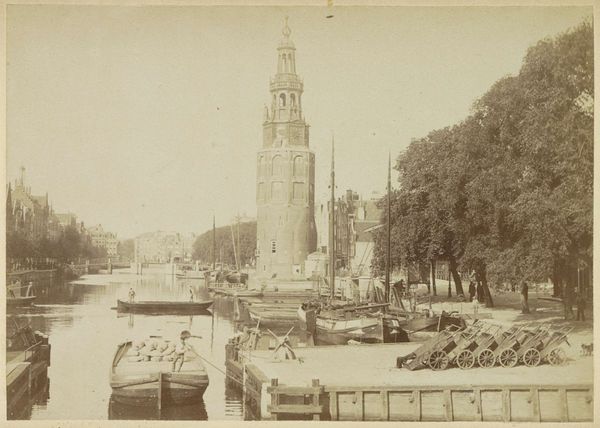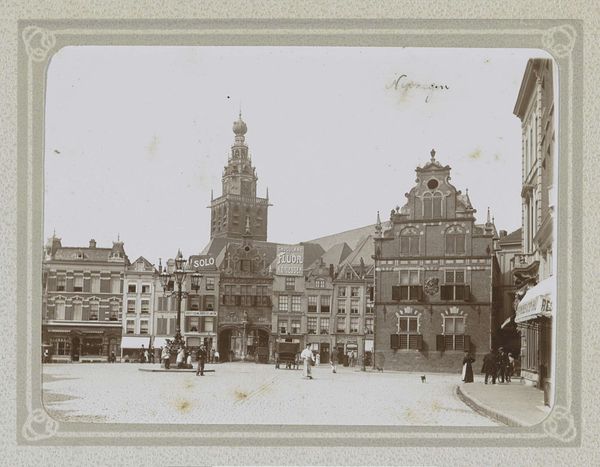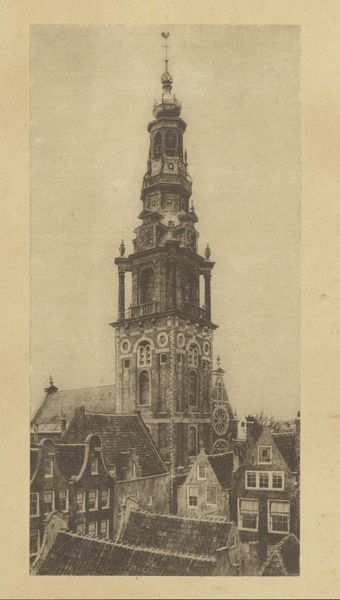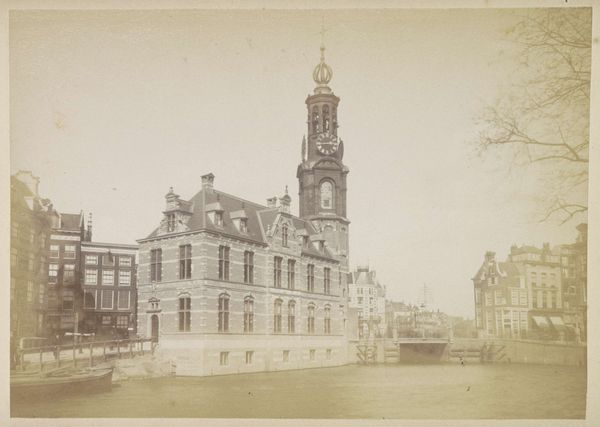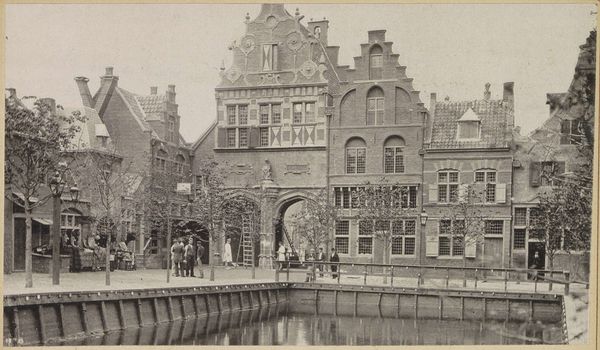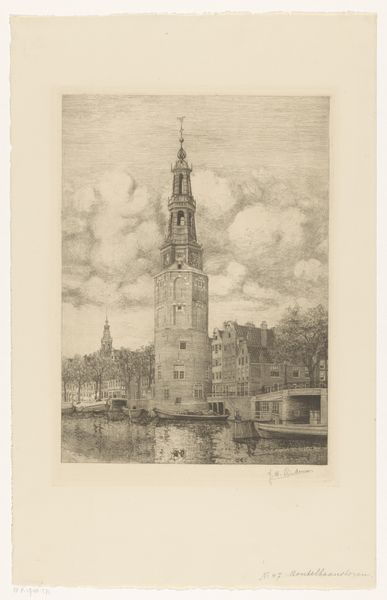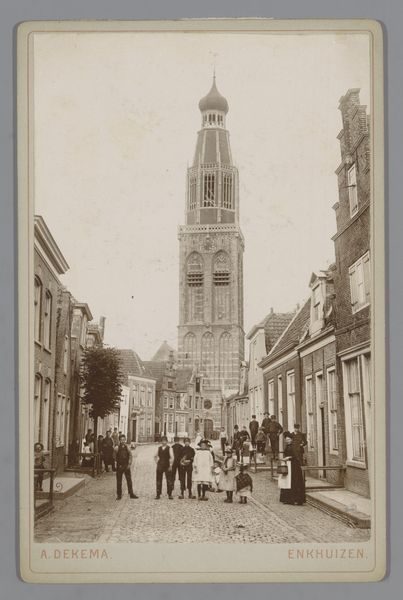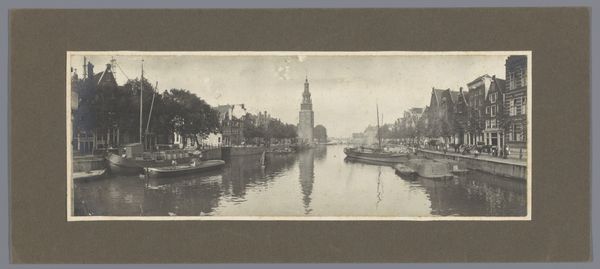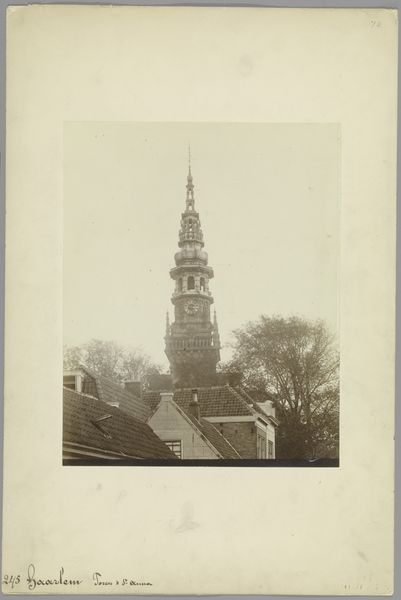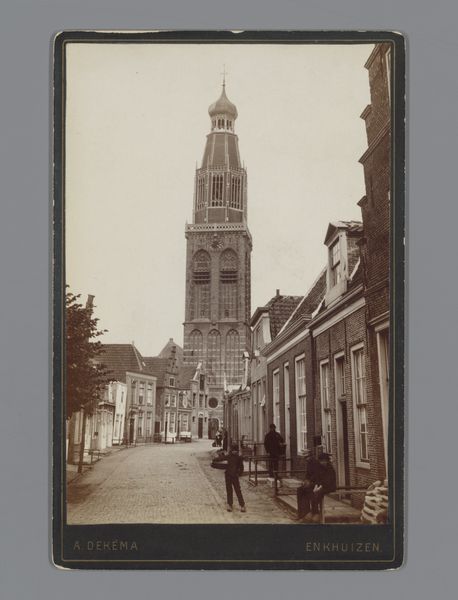
photography, architecture
#
still-life-photography
#
pictorialism
#
sculpture
#
landscape
#
historic architecture
#
traditional architecture
#
photography
#
cityscape
#
architecture
Dimensions: height 81 mm, width 110 mm
Copyright: Rijks Museum: Open Domain
Curator: What a fascinating piece. This photograph, "Waag van Alkmaar, gezien vanaf de Zijdam," by Folkert Idzes de Jong, likely taken between 1905 and 1907, presents the Weigh House of Alkmaar, reflected beautifully in the canal. Editor: There’s a tranquility to this scene, despite the imposing architecture. The sepia tones lend a certain nostalgia, like viewing a memory faded by time. I see a reflection that carries an iconic symbol of Dutch history and local government power and how that legacy is carried in this space. Curator: Absolutely. This image fits into the Pictorialism movement, which aimed to elevate photography to art, often imitating painting through soft focus and atmospheric effects. Pictorialism challenged traditional roles and structures within art. Was it truly accessible? Were its aesthetics exclusionary? Editor: The reflection is powerful—doubling the presence of the Weigh House, almost like an ancestral echo. Weigh houses, in general, were centers of trade, marking economic power, sure, but more than that, they were vital spaces for people to gather, interact, and create community bonds through economic practice. Curator: Yes, and looking at the broader socio-political landscape of the early 20th century, consider how urban planning and development impacted marginalized communities. Who had access to these civic spaces, and whose voices were amplified or silenced in these centers of commerce and governance? This building is a reminder of that legacy. Editor: Thinking about the clock on the tower – such an age-old symbol of time's passage and regulation. The reflections imply constant change yet timeless endurance. Curator: Right, time, power, commerce—all swirling together, both literally and figuratively, in that canal. De Jong, in crafting this image, not only captured a specific place but also a moment ripe with social and political context. We should consider, too, the gendered dynamics of these spaces and systems. Editor: These reflections encourage us to look closer and to consider all its echoes. There's a deeper connection here, past simply the photograph. Curator: A poignant glimpse into a moment that demands we contextualize power with progress.
Comments
No comments
Be the first to comment and join the conversation on the ultimate creative platform.


